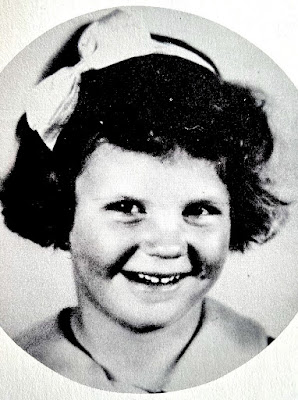 |
| You can buy this for $135K USD. Free shipping. |
The primary Plath archive at Indiana University's Lilly Library isn't pure Sylvia Plath. It's her mother Aurelia Plath's edit of her accumulation of Sylvia's papers and memorabilia, 3000 pieces spanning Plath's lifetime, plus letters Aurelia wrote and received up to 1974. Generous, remarkable. Yet Plath scholar Dr. Anita Helle nails it when she writes, "It is in the character of the modern archive to be both overflowing and incomplete." [1]
Here then are some of the items I and others see "missing" from Sylvia Plath archives. In print are thousands of pages, millions of words, of Plath's writings, drawn from multiple archives and coaxed out of private collections, so much we can hardly read it all, but it's just human to fixate on what's missing, like the shepherd with 99 sheep.
These exist but can't be accessed:
Telegram to Ted Hughes, February 1957, from New York's Poetry Center, saying Hughes has won the prize of publication for his manuscript The Hawk in the Rain.
Aurelia Plath's own journals, referenced in Letters Home, were part of a Plath family donation to Yale's Beinecke Library and might someday be available.
A few letters from Sylvia to Aurelia and to acquaintance Lynne Lawner.
Ted Hughes around 1990 began hinting that he did not destroy Sylvia Plath's last journal. In a recent Substack interview [2], archivist and Plath editor Peter K. Steinberg said he knows where the last two missing journals are, and in an online talk added that they are sealed until 2063. In fact they are sealed until 2059.
Of Aurelia Plath's letters to Sylvia, some survived into the 1970s, because Aurelia had wanted to publish a few in Letters Home. In the 1980s Aurelia told Dr. Richard Larschan that nearly all her letters to Sylvia -- only ten are in archives -- had been burned, but never said Sylvia burned them. I say a better candidate for the "burning" is Olwyn Hughes, Ted's sister and Plath's censorious "literary agent." Larschan said that Aurelia spoke sadly of the loss but said no more.
Absent from the Lilly archive's file of Sylvia's unpublished short stories are the manuscripts of "The Mummy" and "The Trouble-Making Mother," both written in 1959. Sylvia must have carried them to England. Olwyn Hughes in 1989 asserted that "The Mummy," in her custody, "went missing 20 years ago." [3] Peter K. Steinberg found a fragment of that story at Emory University's Hughes archive and it appears in The Collected Prose of Sylvia Plath (795-96).
Where these are, I don't know:
Some very consequential communications were possibly destroyed soon after creation or receipt because they caused such pain:
-Telegram, February 1963, from Ted Hughes to Sylvia's aunt Dorothy Benotti, saying "Sylvia died yesterday."
-Letter, July 1953, from Harvard University Summer School denying Sylvia admission to Frank O'Connor's short-story-writing class.
Missing: Records from autumn 1958 when Aurelia and siblings Dottie and Frank argued over housing their aging father and spending his cash. Sylvia briefly mentioned the conflict but Aurelia certainly withheld specifics or conveyed them to Sylvia over the telephone.
Missing: Some tell-all letters Sylvia wrote to her in-laws when Ted left her, letters supposedly stolen by one of Ted's girlfriends. [4]
Missing: Hours before her suicide, Sylvia paid her downstairs neighbor for stamps so she might mail some letters, but the letters were in her flat, unsent, when she died. Ted did open and read the letter addressed to Aurelia, because later he advised Aurelia not to read it. Aurelia told Richard Larschan she did not read it.
Lost:
The draft, written in 1962, of Sylvia's unfinished novel Doubletake, or Double Exposure, about an artist whose husband cheats on her. [5] Ted and his sister Olwyn and Assia Wevill all read this draft, variously said to be "60" or "130" pages, before it was lost. Ted said Aurelia stole it, but that makes no sense because Aurelia couldn't publish or sell it: Ted held the copyright.
Draft pages of Aurelia Plath's attempt at a novel about her mother's girlhood, its working title Teena Marie, are mentioned in a letter Aurelia wrote in 1960 and in an interview from 1975. And any other creative writings she attempted. Sylvia mentions a radio play Aurelia wrote for a contest she did not win.
Plath-Hughes divorce papers.
Sylvia Plath's letters to Chicago confidant Eddie Cohen.
Most likely never existed:
Unabridged Journals editor Karen V. Kukil says "Sylvia Plath did not keep a journal her senior year at college" (p. 89). Some fans insist this break in journaling is out of character and a journal for 1954-55 must exist. For the curious, Sylvia documented that eventful year in her letters, and many friends such as Nancy Hunter, Peter Davison, Richard Sassoon, and Gordon Lameyer are quoted in Plath biographies or wrote memoirs covering that time.
Of Plath's "second novel of joy and romance," which Aurelia said was titled Hill of Leopards and Sylvia read to her and then burned, no trace has been found.
For sale, if you want to buy them:
Painting, signed by Sylvia Plath [top of page], $135,000, AbeBooks. Painted when Plath was 16. On the same page are about 20 other Sylvia Plath collectibles at scary prices.
Ebay has a few vintage first-edition copies of The Bell Jar by "Victoria Lucas" (1963) and by "Sylvia Plath" (1966) plus many other Plath-adjacent items. If a book is a "first edition" but also a "second [or later] printing," or minus a jacket, it is of dubious resale value.
[1] Helle, Anita. "Reading Plath Photographs" in The Unraveling Archives (2007), Helle, ed., p. 184.
[2] Turrell, James, "James Meets Peter K. Steinberg," Substack titled "James on. . . Everything," 4 October 2024.
[3] Hughes, Olwyn, "Sylvia Plath's Biographers," New York Review, 7 December 1989.
[4] Trinidad, David, "Hidden in Plain Sight: On Sylvia Plath's Missing Journals," Plath Profiles, Vol. 3, Autumn 2010.
[5] Clark, Heather, Red Comet, p. 825.














